Stamps on Postcards - a guide to dating cards
We hope you find this guide useful but it should be used with caution, stamps in circulation could (and can!) still be used after being superceded by later issues and equally 'old' postcards could be sent using more recent stamps. Stamps illustrated are the common issues for the relevant 'postcard rate' of the period. Multiples of lower value stamps were often used, as were stamps higher than the required amount.
Early Postcards 1894-1901
The use of 'Picture Postcards' was first sanctioned by the British Postal Authorities on 1st September 1894. Prior to this date - pre-printed plain cards were in use which are commonly referred to as 'Postal Stationery'
The size of cards varied throughout this period. Court sized cards (3½ x 4½ inches). The 'Intermediate' size of 5 x 3 inches (approx) was followed by the adopted standard sized card 5½ x 3½ inches which was in common use from 1900 until the 1960's
1894 - 1900 (Queen Victoria)
The postage rate for postcards was a halfpenny - ½d
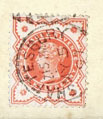
½d 1894 - 1900 Vermillion
1900 - 1901 (Queen Victoria)
The colour of the halfpenny - ½d stamp was changed in 1900 to meet international standards.
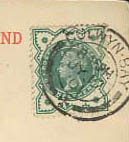
![]()
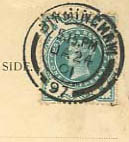
½d 1900 - 1901 Blue-Green
Quenn Victoria died on 22 January 1901
The Divided Back 1902-
Great Britain was the first country to sanction the use of the divided back postcard in 1902. Other countries followed in the years afterwards. The divided back allowed for one side of the card to be used for both the address and a message seperated by a central line. The other side could be a complete picture (or photograph)
Prior to this (undivided back) cards were in use which allowed for address only on one side and a brief greeting on the picture side.
It is of course possible to find undivided back cards used after 1902 and divided back cards used with older (pre 1902) stamps
1902 - 1910 Edward VII
Stamps for King Edwards reign were issued on 1st January 1902.
The inland postage rate for postcards was ½d (halfpenny) throughout this period.
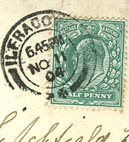
![]()
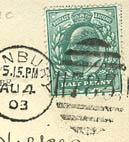
½d 1st January 1902 - 25th November 1904 Blue-Green
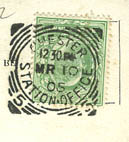
![]()
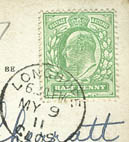
1/2d Yellow Green issued 26th November 1904
Edward VII died on 6th May 1910
1911 - 1936 George V
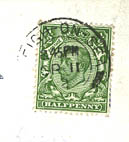
![]()
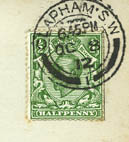
The George V 'Downey Head' stamps were issued on 22nd June 1911 (Coronation Day). Named after the photograph taken of the King by W & D Downey. They were replaced in 1912.
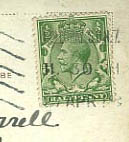
½d Green issued 1st January 1912
1918-1921
Postage rate for postcards was increased to one penny on 3rd June 1918
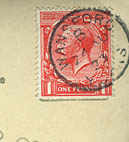
1d red was in use from January 1st 1912 - 1934.
1921-1922
Postage rate for postcards was increased to three half pence on 13th June 1921
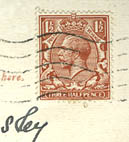
The 1½d brown was in use from January 1st 1912 - 1934
1922-34
Postage rate for postcards was decreased to one penny on 24th May 1922

1d red was in use from 1912 - 1934.
1934 - 36
New definitive stamps were issued.
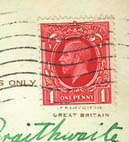
1d red was in use from 24th September 1934 - 1936.
1936 Edward VIII
Edward VIII was king from 20th January till his abdication on 10th December 1936
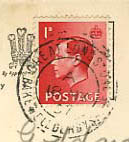
1d Red issued 1st September 1936
1936 - 1952 George VI
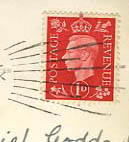
1d red issued 10th May 1937
1940 - 1952
Postage rate for postcards was increased to twopence on 1st May 1940
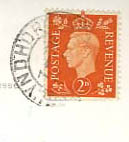
2d Orange in use from January 31st 1938
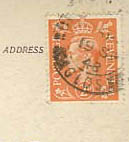
2d (paler orange) stamp issued in July 21st 1941
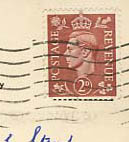
2d brown stamp issued October 2nd 1950
© Michael Day 2008
